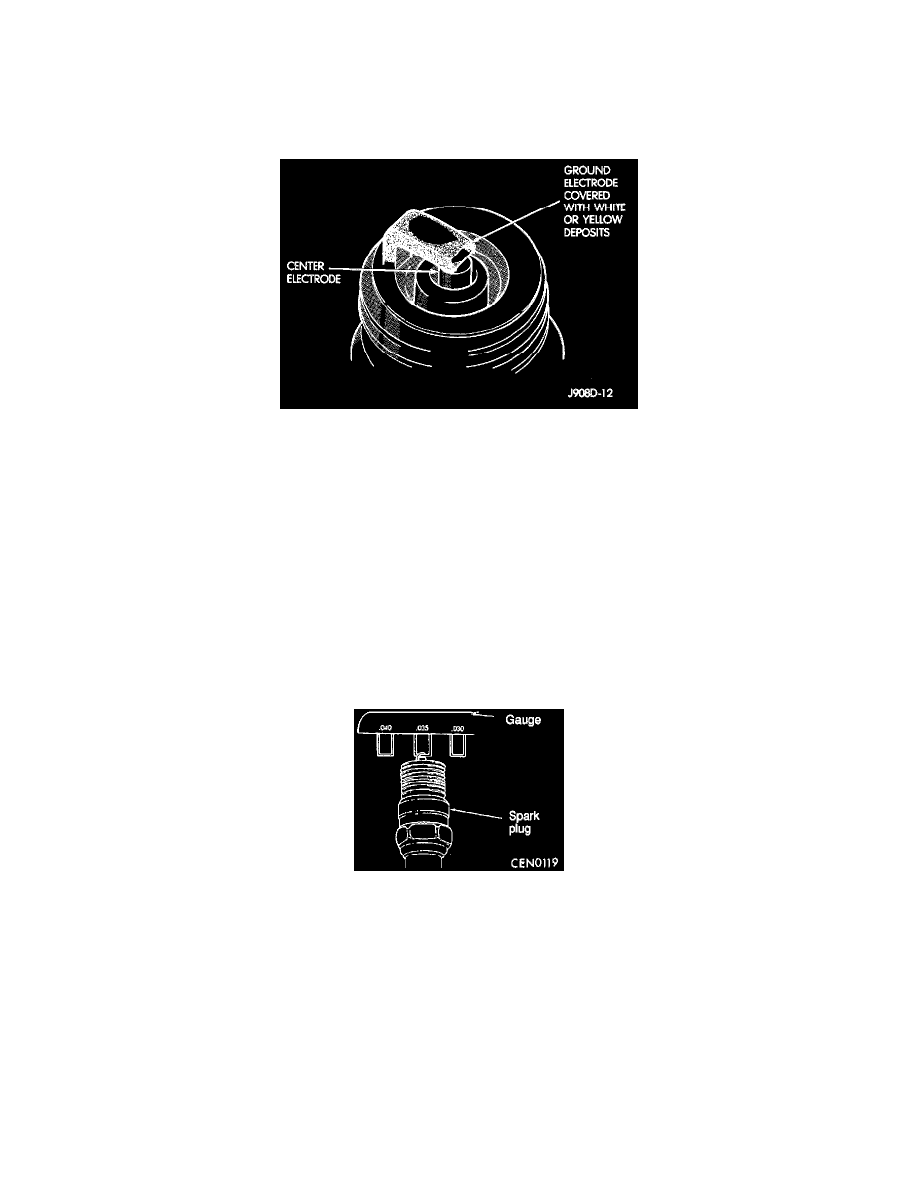Avenger L4-2.0L DOHC (1995)

center electrode and porcelain insulator change how fast the plug can dissipate heat and determine the plugs heat range.
Determine if the spark plugs are the correct type, as specified on the VECI label, or if other operating conditions are causing engine overheating.
Red, Brown, Yellow or White Deposits - Fuel Additives
SCAVENGER DEPOSITS
Scavenger Deposits
Fuel scavenger deposits may be either white or yellow. They may appear to be harmful, but are a normal condition caused by chemical additives in
certain fuels. These additives are designed to change the chemical nature of deposits and decrease spark plug misfire tendencies. Notice that
accumulation on the ground electrode and shell area may be heavy but the deposits are easily removed using standard procedures. Spark plugs
with scavenger deposits can be considered normal in condition, cleaned and reused.
Shiny Yellow Glaze
COMBUSTION DEPOSITS
A shiny yellow glaze coating on the spark plug insulator is evidence of metallic by-products of fuel combustion, caused by chemical additives in
certain fuels. Avoid sudden acceleration with wide open throttle after long periods of low speed driving. Spark plugs with combustion deposits can
be cleaned and reused.
Spark Plug Check and Cleaning
Spark Plug Check And Cleaning
1. Remove the spark plug cables.
CAUTION: When pulling the spark plug cable boot from the plug, always hold the boot, not the cable.
2. Remove the spark plugs.
3. Check for a burned-out electrode or damaged insulator. Check for even burning.
4. Remove carbon deposits with wire brush or plug cleaner. Remove sand from plug screw with compressed air.
5. Use a gap gauge to check the plug gap. Standard value: 1.22 - 1.35 mm (0.048 - 0.053 in). If the plug gap is not within the standard value range,
adjust by bending the ground electrode.
6. Clean the engine plug holes.
CAUTION: Do not allow foreign materials to enter the cylinders.
